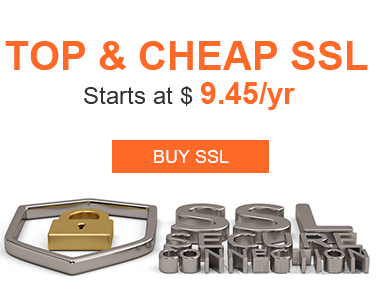SSL Certificate
Deploy an SSL certificate to enable HTTPS encryption of websites, trusted identity authentication and prevent against data leaks or tampering during transmission.
Get SSL Certificate >Blog > Flex vs. Non-Flex SSL Certificates: What's the Difference?
Tag:
SSL Certificates
Flex SSL Certificates
NicSRS
966:0
SamanthaSeptember 9 2025
When shopping for SSL certificates, you might have come across terms like "Flex" SSL certificates and wondered how they differ from traditional options. Both secure your website with HTTPS encryption, but the flexibility and management options vary significantly. Let's break it down in simple terms.
What Are Flex SSL Certificates?
A Flex SSL certificate is designed for maximum versatility. It allows you to:
·Add or remove domains/subdomains during the certificate's lifetime
·Start with a single domain and expand to multi-domain or wildcard coverage as your needs grow
·Avoid reissuing the certificate from scratch whenever domain changes occur
Think of a Flex SSL certificate like a flexible gym membership — you can start with one class and later add yoga, spinning, or swimming without signing up for a brand-new plan. A non-Flex certificate, on the other hand, is like a fixed membership — if you want more activities, you need to cancel and purchase a new plan.
What About Non-Flex (Traditional) SSL Certificates?
A traditional SSL certificate, once issued, is locked to the exact domains or subdomains listed in the original request. If you need to secure additional domains later, you typically need to:
·Reissue or repurchase a new certificate
·Go through domain validation again
·Manage multiple separate certificates if your infrastructure expands
This can become cumbersome for fast-growing businesses or complex environments with frequent domain changes.
Key Differences at a Glance
Feature Flex SSL Certificates Non-Flex SSL Certificates
Domain Changes Add/remove domains anytime Fixed domains at issuance
Scalability Start small, expand as needed New certificate needed for changes
Cost Efficiency Pay for what you need, when you need it Higher cost if frequent changes
Management Effort Simplified, single certificate lifecycle Multiple certificates to track
Real-World Examples
To better understand Flex certificates, let's look at some real products:
1. GeoTrust DV Flex SSL (Flex Certificate)
Starts with one single domain by default.
·You can later add an extra standard domain or a wildcard domain on top of the original one, without reissuing the whole certificate.
·Perfect if you want to start small and add more coverage only when needed.
2. PositiveSSL/Sectigo Mixed Multi-Domain SSL (Non-Flex Certificate)
Comes with 3 single-domain slots by default.
·You can adjust the mix, such as 2 single domains + 1 wildcard or even 3 wildcards, as long as it stays within the 3 slots.
·If you need more than 3, you must purchase additional SAN slots upfront.
3. Thawte Flex SSL (Flex Certificate)
Works the same way as GeoTrust DV Flex — start with a single domain, expand on demand, no need to replace the certificate. Actually Digicert and its products follow the same Flex model.
When to Choose Flex SSL Certificates
·Dynamic Environments: SaaS platforms, hosting providers, or businesses adding new domains frequently
·Cost-Sensitive Projects: Avoid paying upfront for domains you may never use
·Simplified Management: Reduce the burden of managing multiple certificates
For smaller websites with stable domain requirements, traditional certificates may still be the simplest, most cost-effective choice.
SSL Certificates from NicSRS
At NicSRS, we offer a full range of SSL solutions — including both Flex and non-Flex options — from trusted CAs like DigiCert, Sectigo, and our own sslTrus brand. Whether you need a single-domain DV certificate or a highly flexible multi-domain solution, we've got you covered with competitive pricing and expert support.
Check out our SSL certificate options to find the right fit for your business.
RELATED
2025-12-04 11:44:39
2025-11-27 13:34:03
2025-10-22 15:01:21
2025-10-16 11:03:19
2025-10-10 14:02:04
Categories

Free SSL Tools
Top Posts
Comments